calsfoundation@cals.org
Historic Dyess Colony: Boyhood Home of Johnny Cash
aka: Johnny Cash Boyhood Home
When the Historic Dyess Colony: Boyhood Home of Johnny Cash opened in 2014, it became the fourth heritage site established by Arkansas State University (ASU) to preserve the history and culture of eastern Arkansas. The site consists of two main structures in Dyess (Mississippi County): the Dyess Administration Building, located at 110 Center Drive, and the Boyhood Home of Johnny Cash, located at 4791 W. County Road 924. The museum allows visitors to explore the construction of one of America’s first and largest New Deal agricultural resettlement colonies, see what it was like to live in the colony, and learn how colony life influenced and helped shape legendary musician Johnny Cash as well as music promoter Gene Williams.
The white, two-story, Greek Revival–style Administration Building, designed by Little Rock (Pulaski County) architect Howard Eichenbaum, originally housed a variety of federal government offices and colony services. After the government sold the building in the mid-1940s, it first functioned as an apartment building and then as a private residence. The Dyess Colony Center was listed on the National Register of Historic Places on January 1, 1976. Based on the favorable findings of a 2010 feasibility study, ASU entered into a partnership with the City of Dyess. The city donated the Administration Building to ASU, and Dr. Ruth Hawkins, director of Arkansas State University Heritage Sites, began the process of restoring the building and turning it into a heritage site.
Ray and Carrie Cash moved their family to the Dyess Colony on March 24, 1935. They lived in a five-room house built with wood from the site. In addition to the house, the property included a barn, a chicken coop, a smokehouse, and an outhouse. After the Cash family sold its farmstead in 1953, the property changed owners several times until the Stegall family purchased it in 1974. By the time ASU bought it in 2011, the house had been on the list of Arkansas’s most endangered historic places for five years.
Due to its condition, one of the first priorities was to stabilize the house’s foundation. Work also began on restoring the house according to the original floor plan. Johnny Cash’s two younger (and only living) siblings, Joanne Cash Yates and Tommy Cash, assisted Hawkins by creating sketches of each of the five rooms to ensure that the house museum accurately portrayed what the home looked like while Johnny Cash lived there. Most of the furnishings were donated, but the house museum has some original pieces, such as Carrie Cash’s piano in the living room, a floor covering in two of the rooms, and personal items belonging to Ray and Carrie Cash. From 2011 to 2014, the profits from an annual Johnny Cash Music Festival helped fund the restoration and maintenance of the home; this festival has evolved into the Johnny Cash Heritage Festival.
One wing of the Dyess Administration Building houses interactive audio-visual exhibits on the development of the historic Dyess Colony and what it was like to live there. The Johnny Cash room displays some authentic pieces, including his military trunk and a table he made in school. The other wing houses the offices of the City of Dyess. There is also a room dedicated to music promoter and Grand Ole Opry Hall of Fame music personality Gene Williams, whose monetary donation helped the City of Dyess buy the Administration Building as well as what was left of the theater building. Other prominent features of the Administration Building are its original wood paneling, floors, and doors.
The Historic Dyess Colony: Boyhood Home of Johnny Cash opened to the public on August 16, 2014. Cash’s daughter Rosanne Cash spoke at the grand-opening ceremony.
It was announced in October 2016 that the home was chosen for the 2016 Best of the South award given by the Southeast Chapter, Society of Architectural Historians. On May 2, 2018, the Boyhood Home of Johnny Cash was listed on the National Register of Historic Places.
For additional information:
“Farm No. 266—Johnny Cash Boyhood Home.” National Register of Historic Places registration form. On file at Arkansas Historic Preservation Program, Little Rock, Arkansas.
Historic Dyess Colony: Boyhood Home of Johnny Cash. http://dyesscash.astate.edu (accessed December 4, 2025).
Holley, Donald. “Trouble in Paradise: Dyess Colony and Arkansas Politics.” Arkansas Historical Quarterly 32 (Autumn 1973): 203–216.
Pittman, Dan W. “The Founding of Dyess Colony.” Arkansas Historical Quarterly 29 (Spring 1970): 313–326.
Schulte, Brett. “Home of Johnny Cash Hopes History Will Help It Rise.” New York Times, August 12, 2014, p. 12A. Online at http://www.nytimes.com/2014/08/13/us/johnny-cash-arkansas-dyess-tourism.html?_r=0 (accessed December 4, 2025).
Woodward, Colin Edward. Country Boy: The Roots of Johnny Cash. Fayetteville: University of Arkansas Press, 2022.
Anna K. Westman
Arkansas State University–Newport


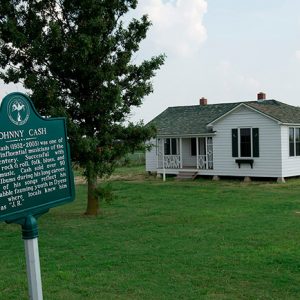 Johnny Cash Boyhood Home
Johnny Cash Boyhood Home 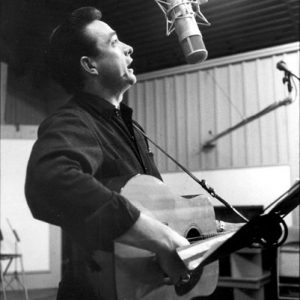 Johnny Cash
Johnny Cash 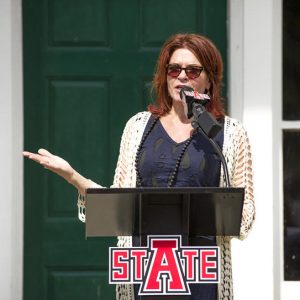 Rosanne Cash
Rosanne Cash 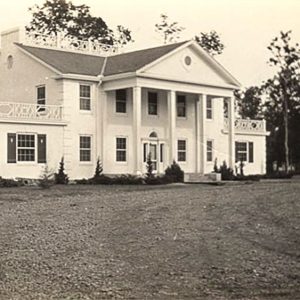 Dyess Administration Building
Dyess Administration Building 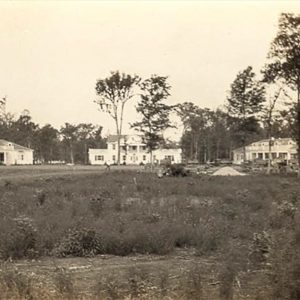 Dyess Buildings
Dyess Buildings 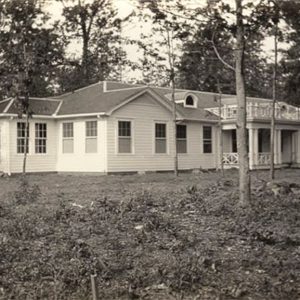 Dyess Hospital
Dyess Hospital  Ruth Hawkins
Ruth Hawkins 



Comments
No comments on this entry yet.